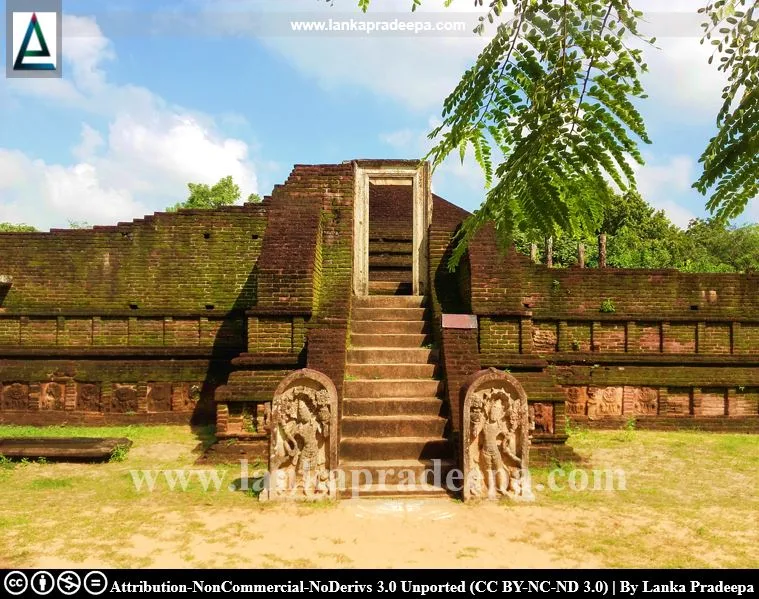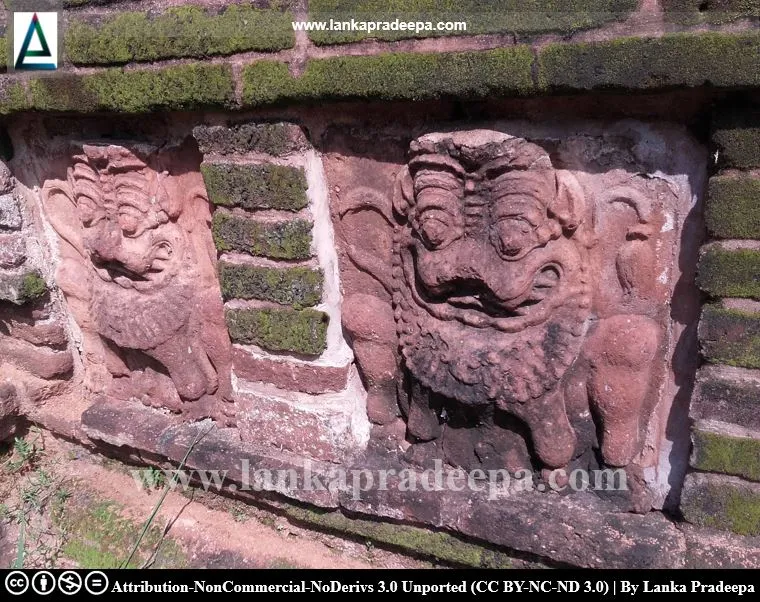
|
Menik Vehera Stupa |
Menik Vehera (lit: The gem temple; Sinhala: මැණික් වෙහෙර) is a ruined Buddhist monastic complex in the Ancient City of Polonnaruwa, Sri Lanka. It is located between the ruins of Siva Devale A and Siva Devale No.7.
History
The history of this complex is not known (Abeysinghe, 1998). During archaeological excavations, some gems (Menik) were discovered at the premises and after that, this site was begun to known as Menik Vehera (Abeysinghe, 1998). Depending on its architectural features, scholars have dated back this complex to the 8-9 centuries A.D. The monastic structures indicate at least two stages of development belonging to the 8-9 century A.D. and the 12-13 century A.D.
As some medical equipment was found at the site, it is assumed that this monastery complex may have functioned as a hospital with practitioner monks (De Thabrew, 2013).
The Temple Complex
The temple is situated outside the city's Northern gate and has been built on a terraced layout (Wikramagamage, 2004). The topmost terrace includes the Stupa, the Bodhighara (Bodhi tree shrine), the image house, and the Uposathagharaya. The remains are located on the lower terrace.
Built on a high terrace surrounded by a high wall, the brick-built Stupa of this complex is considered a rare piece of work. The terrace is circular in shape and has been paved with granite slabs and the perimeter with broad bricks (De Thabrew, 2013). A staircase leads to it at the southern end and at the top of the steps is a stone doorway with carvings (De Thabrew, 2013). The terraced design of this Stupa shows similarities to the design of the Indikatuseya Stupa at Mihintale. The carved stone door frame at the entrance and the terracotta tablets of squatting lions on the plinth are considered special features of the monastery complex.
Near the Stupa is a Gandhakuti type image shrine. It has a square-shaped chamber with a porch in front. The three standing Buddha statues in the image shrine perhaps represent the Buddhas of the past, present and future. The sculptural features of these statues indicate that this complex must have been in existence during the Anuradhapura Period (De Thabrew, 2013). The shrine possibly has been built following the design of the image house at Medirigiriya.


Related Posts
Read Also
References
Books
1) Abeysinghe, A.B., 1998. Guide to Polonnaruwa. p.60.
2) De Thabrew, W. V., 2013. Monuments and Temples of Orthodox Buddhism in India and Sri Lanka. Author House.
3) Wikramagamage, C., 2004. Heritage of Rajarata: Major natural, cultural and historic sites: Colombo. Central Bank of Sri Lanka, p. 213.

